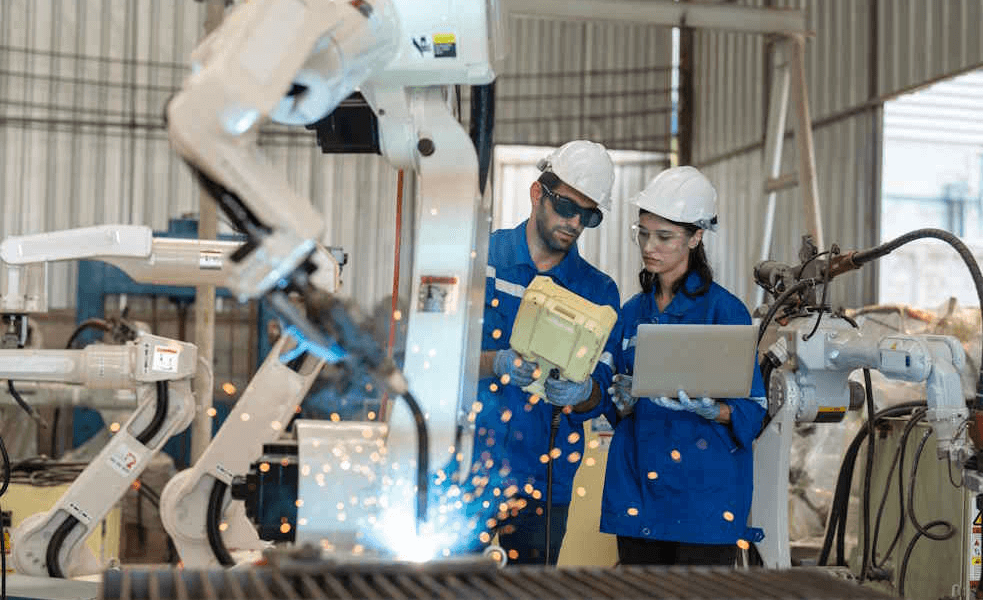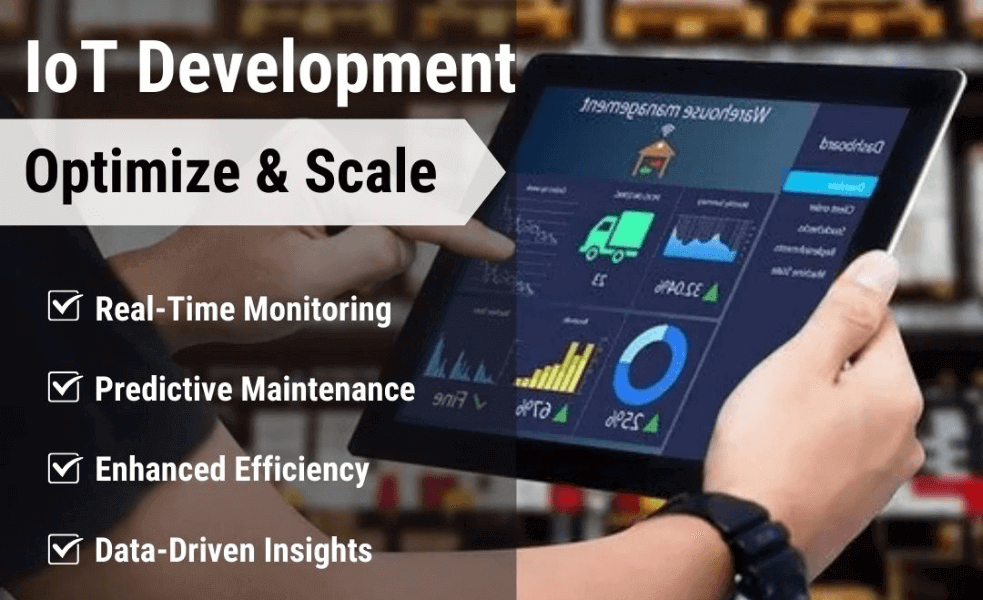Why Predictive Maintenance Matters More Than Ever
Imagine running a manufacturing plant or managing a fleet of machines where a sudden breakdown can halt your entire operation and cost thousands—sometimes millions—in lost revenue. Traditional maintenance methods often rely on fixed schedules or reactive repairs, which can either waste resources or lead to catastrophic failures.
That’s where predictive maintenance powered by IoT comes in. It’s a smarter, data-driven approach to maintaining equipment — using sensors, real-time monitoring, and AI to predict exactly when a machine needs attention before it fails. No more guessing. No more surprises.
In 2025, predictive maintenance is no longer a luxury but a necessity for businesses aiming to optimize uptime, cut costs, and stay competitive in a fast-moving world.
What Is Predictive Maintenance?
Predictive maintenance is a proactive maintenance strategy that leverages data collected from IoT-enabled sensors installed on equipment to anticipate failures before they happen. Rather than relying on time-based schedules or waiting for breakdowns, predictive maintenance uses continuous condition monitoring and analytics to determine the optimal maintenance window.
This approach extends asset life, improves safety, and saves money by targeting maintenance activities only when needed.
How IoT Enables Predictive Maintenance
The backbone of predictive maintenance is IoT technology. Here’s how it works:
1. Sensors Collect Data
IoT sensors measure critical parameters like vibration, temperature, pressure, humidity, and noise in real time. These sensors are installed on machines, motors, pumps, conveyors, and other key assets.
2. Data Transmission
Collected data is transmitted via secure wireless networks to cloud platforms or edge devices for processing.
3. Data Processing & AI Analytics
Advanced analytics platforms equipped with AI and machine learning algorithms analyze the data to detect patterns, anomalies, and early warning signs of failure.
4. Predictive Insights & Alerts
Based on analysis, the system generates predictive insights and alerts maintenance teams about impending issues, specifying the severity and urgency.
5. Proactive Maintenance Scheduling
Maintenance can be scheduled based on real condition and risk rather than arbitrary calendars, optimizing labor and parts usage.
Benefits of Predictive Maintenance with IoT
Reduce Unplanned Downtime
Unexpected breakdowns are a costly headache. IoT predictive maintenance cuts downtime by catching problems early.
Save Money on Repairs and Spare Parts
Targeted maintenance avoids unnecessary part replacements and expensive emergency repairs.
Extend Equipment Lifespan
Keeping machines in optimal condition delays wear and tear.
Improve Workplace Safety
Preventing catastrophic equipment failures protects workers from hazardous conditions.
Optimize Workforce Efficiency
Maintenance teams can focus on critical tasks instead of routine inspections.
Data-Driven Decision Making
Continuous data flow provides insights for long-term improvements and capital planning.
Real-World Applications of Predictive Maintenance
Predictive maintenance via IoT isn’t theoretical — it’s in use across industries, delivering measurable results:
- Manufacturing: Sensors on assembly lines detect motor overheating or tool wear before failures cause shutdowns.
- Energy: Wind turbines’ vibration sensors predict blade or gearbox faults, minimizing downtime.
- Transportation: Fleet vehicles use telematics and sensors to predict engine or brake system issues, optimizing maintenance schedules.
- Oil & Gas: Pipeline pressure and flow sensors detect leaks or blockages early, preventing spills and environmental hazards.
- Utilities: Power grid transformers and equipment are monitored to avoid outages and costly repairs.
Technologies Driving Predictive Maintenance
IoT Sensors and Devices
Miniaturized, rugged sensors capture a wide range of data from even the harshest environments.
Edge Computing
Processes data locally for instant anomaly detection, reducing latency and bandwidth needs.
Cloud Platforms
Centralize data storage and enable complex AI-driven analytics at scale.
Machine Learning Algorithms
Learn from historical data to improve fault prediction accuracy over time.
Mobile & Web Dashboards
Provide real-time visibility and actionable alerts for maintenance teams on the go.
Challenges and How to Overcome Them
Data Overload
Too much raw data can overwhelm systems and teams. Solution: Use AI-driven filtering and smart dashboards that highlight only critical alerts.
Integration with Legacy Systems
Bridging older equipment with new IoT platforms requires middleware or gateways.
Security Concerns
Ensure devices and data are protected via encryption, authentication, and regular software updates.
Cost of Implementation
Start small with pilot projects to demonstrate ROI before scaling enterprise-wide.
Workforce Training
Invest in training so your maintenance teams fully leverage IoT insights.
Step-by-Step Guide to Implementing IoT Predictive Maintenance
1. Assess Your Assets
Identify critical equipment where downtime impacts business the most.
2. Define KPIs and Goals
Set measurable objectives like reducing downtime by X% or maintenance costs by Y%.
3. Choose IoT Hardware
Select sensors compatible with your assets and environment.
4. Pick a Scalable Platform
Choose an IoT analytics platform that supports your data volume and security needs.
5. Pilot Your Solution
Start with a small group of machines to test sensors, data accuracy, and workflow impact.
6. Train Your Team
Ensure maintenance staff know how to interpret alerts and act accordingly.
7. Analyze & Optimize
Regularly review data, refine algorithms, and adjust maintenance schedules.
8. Scale Up
Expand across facilities or asset types for full impact.
Future of Predictive Maintenance in IoT
The future looks bright and even smarter:
- Digital Twins: Virtual models of assets simulate wear and predict failures with high accuracy.
- 5G Connectivity: Ultra-low latency enables real-time control and faster response.
- AI Evolution: Smarter algorithms will provide prescriptive maintenance recommendations, not just predictions.
- Sustainability Focus: Predictive maintenance will help companies reduce waste and energy use.
Frequently Asked Questions (FAQs)
Can predictive maintenance be used on any type of equipment?
Yes, from heavy machinery to HVAC systems, IoT sensors can be tailored for diverse assets.
What if my facility lacks reliable internet connectivity?
Edge computing lets data be processed locally, minimizing reliance on constant cloud connectivity.
Is predictive maintenance expensive?
Initial costs vary, but ROI comes quickly through reduced downtime and repair costs.
How secure is IoT predictive maintenance data?
With proper encryption and security protocols, data is well protected.
Do I need a large IT team to manage IoT predictive maintenance?
Modern platforms are designed for user-friendly management and often include vendor support.
Don’t Wait for Breakdowns — Predict and Prevent
Predictive maintenance powered by IoT isn’t just a nice-to-have. It’s a competitive necessity in today’s data-driven business world. It shifts your maintenance strategy from reactive to proactive, saving time, money, and headaches.
By investing in IoT sensors, analytics, and smart automation, your business can achieve higher uptime, safer operations, and better resource management — all critical to staying ahead in 2025 and beyond.
Start small, learn fast, and scale smart. Your machines — and your bottom line — will thank you.



